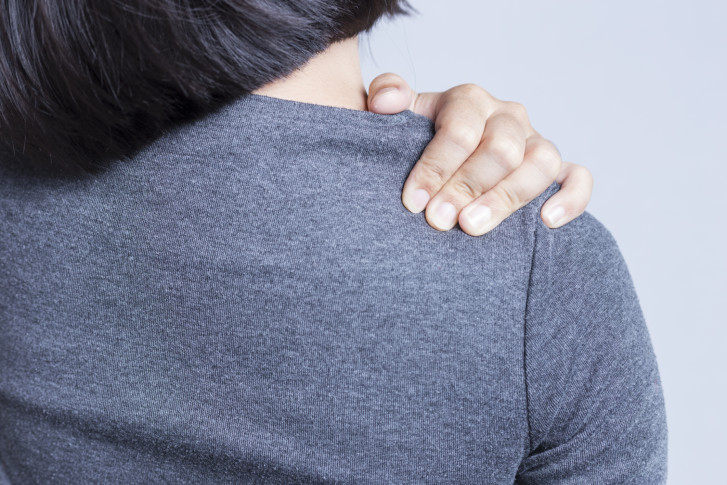
Winter can be the season of pain for people with arthritis. The exact science behind cold-related joint aches is uncertain, but there’s no doubt symptoms can worsen, says Dr. Kelly Weselman, an Atlanta rheumatologist. It could be that muscles, ligaments and joints just get stiffer with lower temperatures, she says. What’s clear is that patients do feel the difference between 90-degree summer days and frigid winter overnight temps. Here are 10 ways to protect vulnerable joints as the weather grows cold.
Realize discomfort is real.
It’s when weather turns chilly or rainy that patients call for treatments like injections in the joint spaces (or intra-articular injections) for aching shoulders or knees, says Dr. Laura Reese, an orthopedic surgeon with Ashland Orthopedic Associates in Kentucky. One likely reason, she says, is that the synovial lining of the joints — filled with fluid that bathes joints and helps keep cartilage healthy — reacts to barometer and temperature changes. Oddly enough, she says, patients who have had joint replacements often continue to complain of cold-weather aches around their new shoulders or knees.
Feel the (exercise) burn.
When cold winds blow, staying cozy indoors is more tempting than taking a walk — but staying active is better for function and mobility, Weselman says. Cutting down on activity only leads to decreased range of motion and more joint pain. Many people who become less active in the winter tend to put on a few pounds, Weselman says: “And we know, especially with the knees, that even 5 pounds can make a difference in the degree of pain.”
Layer up.
Dress warmly and in layers, Weselman advises. “It’s important to keep the core body temperature warm,” she says. Keeping joints warm is also essential, she says, along with surrounding muscles and ligaments. Gloves, scarves, warm boots, long johns — who knows, maybe even legwarmers — protect your skin and joints from outdoor cold exposure. Dress for the changing weather, Reese says: “If it’s going to be 38 degrees, and you tend to wear shorts year-round, put some pants on.”
Tweak your workout for winter.
Adapt to the colder months by doing aerobics indoors, Weselman suggests. “Using equipment like treadmills and exercise bikes is one way to stay warm,” she says. Heated indoor pools also provide good options for joint-friendly fitness.
Stretch against stiffness.
As people get older, their joints tend to get stiffer. “I am a firm believer in stretching for the older population: 60-, 70- and 80-year-olds,” Reese says. Tai Chi or similar stretching maneuvers let you stay inside while keeping joints active. If yoga’s your thing, Jake Panasevich, a yoga motivator and Eat + Run blogger, explains how to ignite your practice in the dead of winter.
Take OTC painkillers with care.
Medicines like acetaminophen (Tylenol), ibuprofen (Advil and Motrin) and naproxen (Naprosyn and Aleve) can help people get through the colder winter months. However, even with these over-the-counter drugs, Reese says, your doctor needs to know you’re taking them — especially if you have kidney problems or stomach ulcers, or if you’re on prescription blood thinners.
Apply heat in moderation.
Warm packs for cold joints hold a certain appeal. “People love to use moist heat, heating pads and things like that,” says Reese, who advises caution. “I’ve seen some bad skin burns,” she says. “People fall asleep on heating pads.” She usually recommends 10 to 20 minutes of heat (or ice) to the affected body part. Patients with neuropathies — damaged nerves to the hands or feet, often from diabetes — should use heat or ice packs for no more than 10 minutes at a time, she says, and check every three to five minutes for skin reactions.
See how skin rubs and creams stack up.
Over-the-counter creams, heat gels and other rub-on remedies for arthritis and joint pain sound soothing and smell medicinal, but do they work? In a recent survey of pharmacists, Capzasin was the top-recommended product (21 percent), followed by Biofreeze (18 percent), Icy Hot (15 percent) and Bengay (11 percent).
Be extra cautious for certain conditions.
People with vascular issues like Raynaud’s phenomenon, which can occur alone or with conditions like lupus, experience cold-related symptoms. As blood vessels constrict, fingers and toes feel numb, and skin turns blue or reddens. “These people have a double whammy,” Reese says. “Not only will they notice the pain in the joint just from the cold, they also get the vascular component that goes with it. That can be pretty profound.” So it’s doubly important to keep the core body warm and make sure hands and feet stay warm and dry.
Look to warmer days.
Unless you live somewhere like Siberia, there’s a (warmer) light at the end of the tunnel. For people suffering from cold-weather joint pain, Weselman offers this advice: “It’s important to keep moving — and remember that summer will come.”
No comments:
Post a Comment